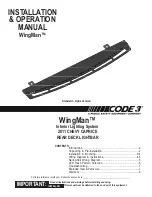
TPMS malfunctions can occur for a variety of reasons,
including installing replacement or alternate tires or
wheels that prevent the TPMS from functioning properly.
Always check the TPMS malfunction indicator light after
replacing one or more tires or wheels on your vehicle to
ensure that the replacement tires or wheels allow the
TPMS to continue to function properly.
NOTE:
If a tire has been replaced or repaired using a
different tire sealant than the one available from Tesla,
and a low tire pressure is detected, it is possible that the
tire sensor has been damaged. Contact Tesla to have the
fault repaired as soon as possible.
Seasonal Tire Types
Understand Your Tire Type
The type of tires that your vehicle is originally equipped
with depends on vehicle model and market region. It is
important to understand the capabilities of your
vehicle's tires and whether they are suited for summer,
all-season, or winter driving. Check the information on
the sidewall of a tire for information about a tire's
performance characteristics (see
Summer and All-Season Tires
Summer tires and all season tires are designed for
maximum dry and wet road performance but are not
designed to perform well in winter conditions. All-
season tires are designed to provide adequate traction
in most conditions year-round, but may not provide the
same level of traction as winter tires in snowy or icy
conditions. All-season tires can be identified by “ALL
SEASON" and/or "M+S” (mud and snow) on the tire
sidewall.
If driving in cold temperatures or on roads where snow
or ice may be present, Tesla recommends using winter
tires. If not equipped with winter tires, contact Tesla for
winter tire recommendations.
WARNING:
In cold temperatures or on snow or ice,
summer and all-season tires do not provide
adequate traction. Selecting and installing the
appropriate tires for winter conditions is important
to ensure the safety and optimum performance of
your Model X.
Winter Tires
Use winter tires to increase traction in snowy or icy
conditions. When installing winter tires, always install a
complete set of four tires at the same time. Winter tires
must be the same diameter, brand, construction and
tread pattern on all four wheels. Contact Tesla for winter
tire recommendations.
Winter tires can be identified by a
mountain/snowflake symbol on the tire's
sidewall.
When driving with winter tires, you may experience
more road noise, shorter tread life, and less traction on
dry roads.
Driving in Low Temperatures
Tire performance is reduced in low ambient
temperatures, resulting in reduced grip and an increased
susceptibility to damage from impacts. Performance
tires (summer applications) have reduced traction in
ambient temperatures below 5° C, and are not
recommended in snow/ice conditions. Performance tires
can temporarily harden when cold, causing you to hear
rotational noise for the first few kilometers until the tires
warm up.
Using Tire Chains
Tesla has tested and approved the following tire chains
to increase traction in snowy conditions. Tire chains
should only be installed on the rear tires. The approved
tire chains can be purchased from Tesla.
Tire Size
Recommended Chain
20"/22"
KONIG K-SUMMIT K67
When installing tire chains, follow the instructions and
warnings provided by the tire chain manufacturer. Mount
them evenly and as tight as possible.
When using tire chains:
• Inspect the tire chains for loose fittings and damaged
links before each use.
• Set air suspension to Standard (see
).
• Avoid heavily loading Model X (heavy loads can
reduce the clearance between the tires and the
body).
• Do not drive the vehicle without the chains properly
installed.
• Drive slowly. Do not exceed 48 km/h.
• Remove the tire chains as soon as conditions allow.
NOTE:
Tire chains are prohibited in some jurisdictions.
Check local laws before installing tire chains.
CAUTION:
Air suspension should remain in the
Medium
ride height setting to avoid damage.
Tire Care and Maintenance
195
Maintenance
















































